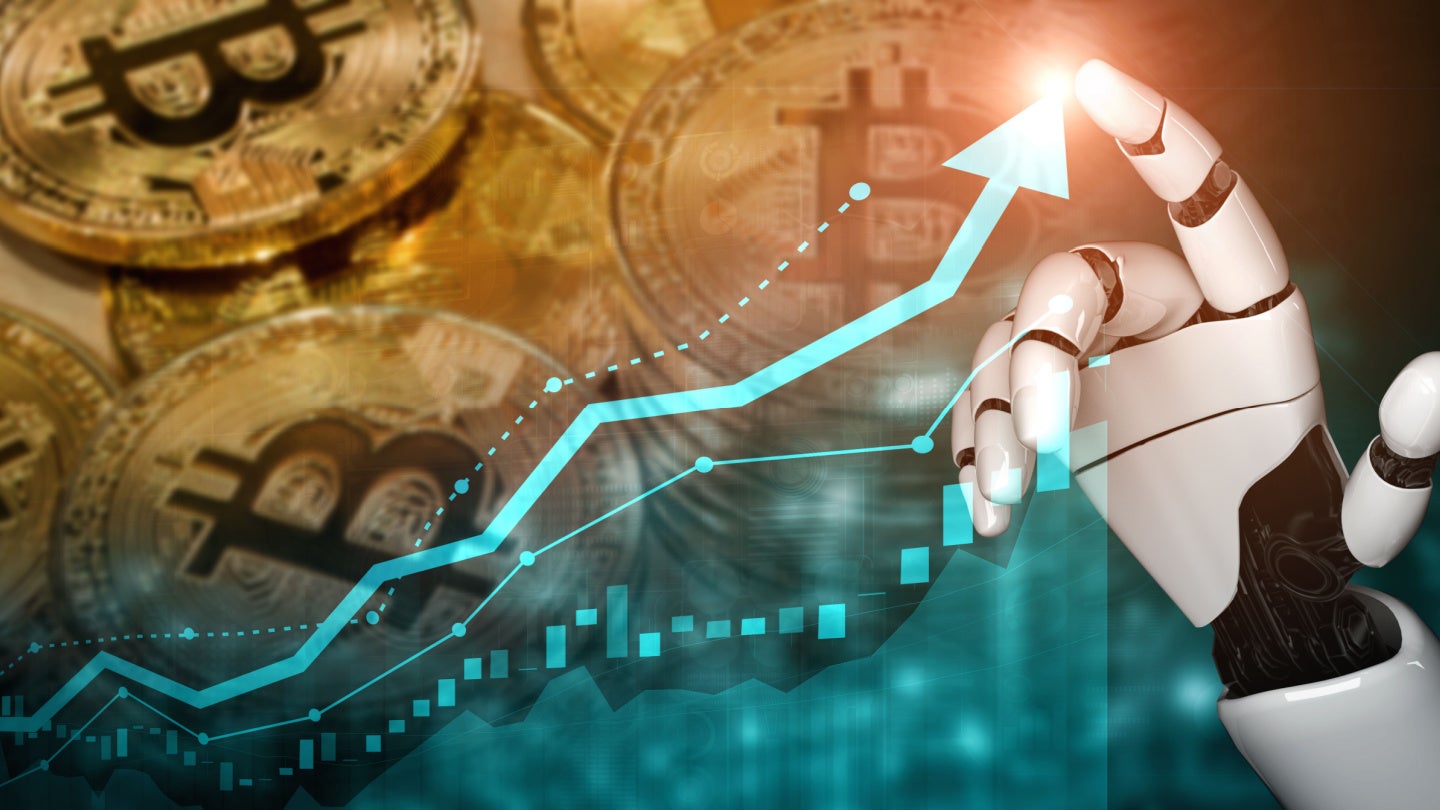The inherently volatile crypto market often finds its stability linked to noteworthy news stories – including artificial intelligence (AI) related stories.
Following the collapse of Silicon Valley Bank on 10 March 2023, the price of Bitcoin surged an impressive 37.7% within a mere ten day period. More recently, so-called AI cryptocurrencies saw a notable upswing on 25 May 2023, attributable to NVIDIA‘s robust earnings report and the mounting demand for AI chips.
AI and cryptocurrency are not strangers to overwhelming waves of hype and interest, so it comes as no surprise that the two have converged to form AI cryptos. This new token subset allows users to invest in governance tokens for blockchain-based AI projects. At its peak, the total market cap of the contemporaneous 74 AI tokens was $4.03bn at the end of February 2023, according to cryptoslate.com, while the rest of the crypto market was flat. At the time of writing, the now 89 AI cryptos come in exactly $1bn lower at $3.03bn. Do AI cryptos present genuine use cases, or are they just another pump-and-dump fad, riding the AI hype train?
What does ‘AI crypto’ really mean?
Simply put, AI crypto coins are a type of cryptocurrency that incorporate artificial intelligence technology into their operations. Most AI tokens cater to specific applications involving blockchains, such as AI-powered trading algorithms, AI-oriented blockchain consensus methods, and AI-driven decentralized autonomous organizations (DAOs).
According to Binance Research, AI cryptos can be divided into two principal areas: smart ledgers, and AI-powered services. Smart ledgers are networks that use AI to automate tasks in conjunction with distributed ledger technology. One such example is SingularityNet, a blockchain platform that allows anyone to build, share, and monetize AI services. AI-powered services are projects that use AI on the backend to provide a service to users. Phala Network is one prevalent example, which provides access to privacy-preserving data for AI models. Each of these projects has its own native cryptocurrency. SingularityNET uses its cryptocurrency AGIX to power its internal marketplace where users can browse and pay for AI services, while Phala Network uses its cryptocurrency PHA to allow users to pay for cloud services.
AI cryptos and blockchain
While the term ‘AI cryptos’ may sound like the ultimate technological frenzy, it is now clear that the relationship is better described as one between AI and blockchain, with a side of utility tokens. Most of the AI-cryptocurrency projects that have garnered media attention are just AI-powered blockchain projects that use cryptocurrencies as governance and incentive mechanisms. It should not be surprising that AI and blockchain have a smooth interplay. They both strive to uphold similar values such as authenticity (explainable AI), augmentation (AI processing large volumes of data), and automation (AI models embedded in smart contracts).

US Tariffs are shifting - will you react or anticipate?
Don’t let policy changes catch you off guard. Stay proactive with real-time data and expert analysis.
By GlobalDataIn some ways, the AI crypto phenomenon should be praised for converging two divergent technologies. AI looks to be getting more centralized, with Big Tech companies like Google and Microsoft investing in OpenAI. Crypto, on the other hand, is aiming for progressive decentralization, highlighted by the prevalence of decentralized finance (DeFi) in the wake of the collapse of several centralized players like FTX. Furthermore, some more recent AI crypto projects stretch beyond blockchain applications, such as AiDoge, which provides a platform enabling users to create AI-generated memes with user-provided prompts. However, the niche area of crypto may be riding the AI hype without a sustainable plan to build stable future value.
A better relationship between AI and cryptocurrency
While current AI-powered blockchain projects can provide end users with utility, the better plan for AI and crypto should be to bring the relationship closer to the edge. One of the major roadblocks in the way of mass crypto and DeFi adoption is the clunky user experience and cumbersome transaction approval processes, which sees users jumping between applications.
AI could automate the background operations of crypto protocols, leaving users with simple one-click experiences and interactive large language models that could solve all of their queries quickly, without the need to dig through forums for answers from protocol developers.









